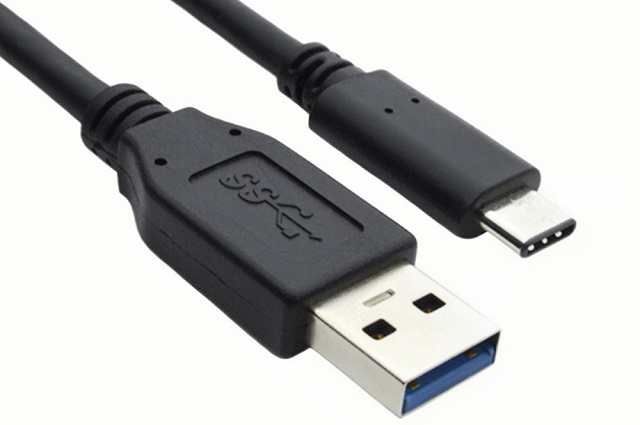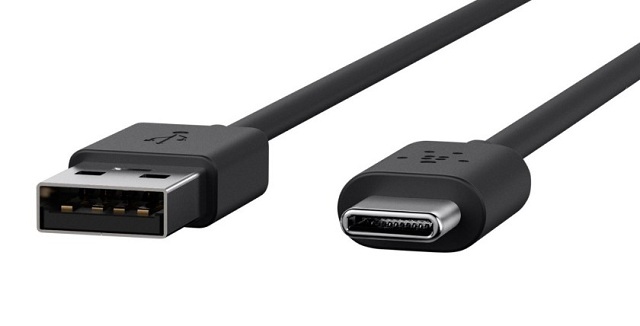What is USB 3.2 and How it Differs from USB 3.1

Designed in the mid-nineties, USB, or Universal Series Coach, has been the industry standard for connecting electronic devices with peripherals over the better office of the past couple of decades. Circa 2017, USB ports and connectors are pretty much omnipresent on electronic devices of every shape and size, having managed to successfully supplant a bunch of unlike interfaces, including series ports, parallel ports, besides every bit various proprietary charging connectors for mobile devices like phones and tablets. While the existing USB 3.1 standard is almost universally used past electronics OEMs worldwide, a new USB iii.2 standard is on the cards if a recent proclamation is anything to get by.
What is USB three.2?
Earlier this week, the USB 3.0 Promoters Group announced the final draft of its USB 3.2 specifications that promises to double the speed of data transfer via Type-C reversible cables. So, while the existing SuperSpeed USB 3.ane (generation ane) cables will see their theoretical speeds increment from 5Gbps to 10Gbps, the speeds of SuperSpeed+ 10Gbps (generation ii) cables will ascension from 10Gbps to 20Gbps, although, passive cables can simply support those speeds if their length is lower than 1 meter.

While these speeds are only the theoretical upper limits of the USB 3.2 standard and will be difficult to lucifer in existent life, the announcement of the new specifications is notwithstanding an important step towards faster connectivity at a time when the Internet of Things is just starting to gain more than widespread acceptance amongst mainstream consumers. According to the press release by the USB 3.0 Promoters Group, "the USB iii.2 specifications is at present in a last draft review phase", and volition be formally released at the USB Developer Days North America event in September 2017.
How Will Speeds Double If I'grand Using The Aforementioned Cable?
If y'all want to know how the new specifications will be able to double the speeds of your existing USB Blazon-C cables, you'll need to understand how the cables are wired in the first place. Because the USB Type-C interface is too used by non-USB protocols such as Thunderbolt three and DisplayPort, the cables and ports accept four pairs of wires to support this flexibility. While Thunderbolt 3 uses all four pairs simultaneously, USB iii.ane uses simply ii, leaving the other ii idle. This is exactly where the new standard comes in.

Although USB 3.2 will retain the physical layer data rates and encoding techniques of the USB 3.1 standard, different its predecessor, it will use all iv available lanes for transmitting and receiving information, similar Apple and Intel'due south proprietary connector technology. While the impending rollout of USB three.2 volition hasten things up when information technology comes to transferring your information from one device to some other, it volition likewise bring some minor changes to the hub specification, thereby bringing faster connectivity and seamless transitions between single and dual-lane operations.
When Tin can We Expect to Get Super-Fast USB 3.2 Speeds?
Exciting equally it is, there'due south a big roadblock towards the immediate adoption of USB 3.two fifty-fifty after its formal announcement later this year. While the new standard will exist backwards compatible with previous-generation USB standards as expected, you lot'll demand both the host and the client to exist natively compliant with USB 3.2 for you to exist able to transfer data at the breakneck speeds of 2.5GB/s (20Gbps). That being the case, don't expect to get double-quick speeds with your shiny new USB Type-C cablevision whatsoever time soon, because it might exist a while before the new standard starts rolling out to devices from global OEMs.
SEE Also: 15 Best USB Type-C Accessories
Is USB 3.2 The Answer to All Our Connectivity Needs?
USB 3.2, in theory, could anytime change the way nosotros charge our smartphones, laptops, wireless speakers and gaming consoles, merely if our feel with the USB Type-C interface is anything to become by, the reality may not necessarily exist that rosy. Type-C was in one case touted as the panacea for all of our charging and data-transfer woes, but the real-world experience, unfortunately, has been completely different. The USB Type-C cable market is confusing at best and frightening at worst, with various products challenge to deliver the fastest speeds, but very few actually adhering to the official specifications that will actually make them universally uniform, which was the point of the whole exercise in the first identify.
As an informed user, the easiest mode to identify a true, standards-compliant USB Type-C cable is to check for the official logo that'due south awarded to a production but afterward it passes the USB-IF testing procedure. While even certified products don't e'er evangelize promised speeds, you lot'll at to the lowest degree not have to worry most compatibility or well-nigh frying your expensive gadgets because of faulty wiring or poor quality-command during the manufacturing process. However, if yous can get yourself a true Type-C cablevision that supports USB 3.1 standards, y'all should be able to take advantage of the technological advancements in the days to come.
Source: https://beebom.com/what-is-usb-3-2/
Posted by: abarcaalts1960.blogspot.com


0 Response to "What is USB 3.2 and How it Differs from USB 3.1"
Post a Comment